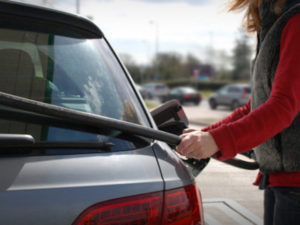WLTP requires urgent tax reform, experts warn
The UK’s car tax system needs to be reformed as soon as the next fiscal year to account for higher CO2 figures generated under the new test cycle, experts have warned, meaning an announcement may have to come as soon as the Autumn Budget.

WLTP is claimed to offer more representative fuel consumption figures than the outgoing test cycle.
As of today, the New European Drive Cycle (NEDC) will cease to be used for fuel consumption and CO2 emissions figures during type approval for new vehicles. Its replacement is the Worldwide harmonized Light Vehicles Test Procedure (WLTP), designed to better represent real-world conditions and the effects of optional equipment.
Clearly this will affect both CO2 emissions and taxation for new cars, but data supplier, Carmen Data, has warned that the timeframe for suitable tax reforms is unclear. Although NEDC testing will stop, the EU’s 2020 fleet-average CO2 target of 95g/km for manufacturers is based on the old test cycle. With the EU itself warning that many vehicles will have higher fuel consumption and CO2 emissions under WLTP testing, those averages will still be calculated using NEDC data for consistency.
So vehicles tested under WLTP will still have NEDC figures recorded during type approval. However, the latter won’t come from a live test, it will be generated using a conversion tool called CO2MPAS which calculates equivalent NEDC figures from WLTP data. Random physical tests will check the accuracy of these simulated figures, and a “correction factor” can be applied if they are deemed to be unrealistic.
While WLTP-tested vehicles will go on sale from next year, the DVLA said new vehicles will have NEDC CO2 values on their V5C registration document until a new tax system is put in place. It said it was seeking stakeholder input to plan a timeframe for the move to WLTP. HM Treasury has no timeframe either; its position being that tax changes were “inevitable” once the DVLA was no longer provided with the relevant values, but that there is no intention to do so in the 2017/18 fiscal year.
The EU is recommending a tighter timeframe. From September 2018, all new vehicles (not just new vehicle types) will have to be WLTP-tested and, after 31 December 2018, it said NEDC data should not be used in consumer materials. Vehicles with only NEDC figures can only be sold until the end of August 2019. After that point, all new vehicles sold across Europe must have WLTP fuel consumption and CO2 values.
To avoid confusion, by that point it would make little sense to have NEDC data on the registration document, in turn underpinning how it is taxed. This means tax reform to suit the new test regime must be in place during the 2019/20 fiscal year, at the latest, to avoid increases for most new vehicles.
A Commission spokesperson suggested this could happen even sooner, commenting that it was “for Member States to decide when and how to adjust national car taxation schemes. If taxation schemes are linked to the vehicles’ CO2 emissions and/or national consumer information schemes, it appears preferable that the switch to WLTP takes place at the same time [January 2019].
“The introduction of WLTP does not necessarily result in higher car taxes if the adjustment of national car taxation schemes takes account of the expected increase in CO2 emissions under WLTP.”
Neither leaves much time for fleets to prepare. JATO Dynamics said tax rate changes could happen “anytime from September 2018” but that they are expected after January 2019, once the industry has found a usable correlation between the two data sets. Fleet World also understands some manufacturers are planning to follow the EU’s recommended timeframe, which could leave consumers dealing with two different CO2 figures.
Meanwhile, Carmen Data said it will incorporate WLTP data as it becomes available and apply it to tax calculators and configurators when appropriate, though director Rupert Russell warns the changes could come sooner than many expect: “Cars will be tested on WLTP soon, so what is preventing that CO2 figure from going on the V5C, as well as the P46 (Car) and P11d calculation?” he asked.
“There is no room on the V5C for more than one CO2 figure at the moment, and we know that new-type cars have to be tested under WLTP from 1st September 2017. Although NEDC is likely to be on the Type Approval/Certificate of Conformity for petrol and diesel cars as well as WLTP figures, NEDC is technically only there to help with gathering data for fleet targets. There could be a massive mess if we see NEDC or equivalent figures on the V5 for cars which have been tested under WLTP, unless the legal basis and practical applications have been worked out first. And on the other hand, few are prepared to see WLTP figures appearing so soon.”
For more of the latest industry news click here.












